Test Pit 16 - 39 Whitecroft Road
This house was built on farmland in the mid 1950s by Ralph Newell. It was originally called Lyndhurst. The pit was located to the rear of the house.
The Finds
The pottery from this pit included five sherds of Romano-British Ware, Early Medieval Sandy Ware, Hedingham Ware, Late Medieval Ware, and an assemblage of post-medieval sherds including Glazed Red Earthenware, Harlow Slipware, Cologne Stoneware and 50 Victorian-era sherds.
Other finds included glass, metal nails, a metal coin, a metal button and other metal scraps, oyster and whelk shells, clay pipe fragments, stone, mortar and charcoal. The faunal assemblage included bones of cow, sheep/goat, pig and some other unidentifiable remains. These included large fragments of cow bone found in the bottom of the pit.
The Romano-British sherds found here indicate the site was certainly used at this time, and form part of a general scatter of similarly-dated finds across the central part of the present village. Smaller numbers of Roman-era sherds were also noted at nearby test pits 2 and 3 and those found around the rest of the village together collectively suggest the existence of a Roman farmhouse or homestead nearby. The area then appears to have been abandoned during the Saxon era, but reoccupied during the medieval period. Activity dropped off again in the late medieval and post-medieval periods suggesting a change in the way the land immediately around the test pit was used, but the finds from this and from neighbouring test pits collectively suggest that this part of the village as a whole remained continuously occupied from the high medieval era through to the present time.
For an overview of the site and finds, please click on the image of the exhibition poster which is the first image in the gallery below.
For detailed analysis of the finds, please see the results sheet for this pit, which is available as a download at the bottom of this page.
For reports and maps relating to all of the test pits, please see the documents available on our results page.
Site Diary
Day One
Pot sherds in first context! Medieval and Victorian and old plant pots, etc. We were not surprised at the plant pots: a market gardener lived here for some years. Some bone and teeth also found. Medieval pot sherds all the way down – a successful day.
Day Two
Went down to 800mm and found some large bones at the base – they need some more excavation. One in middle of west face, one in centre of pit floor and two more in north face. Medieval sherds and bone down to last context. Between 700mm and 800mm we started getting the large bones and also some very black-bodied fragile pot. We dug down to the bottom end of the large bone in the centre and the substrate is very different: much lighter and like fine gravel.
Photo Gallery
Please click on a photograph to display a larger image.



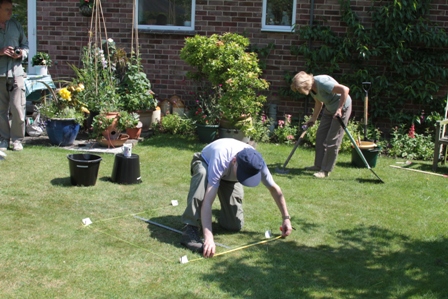









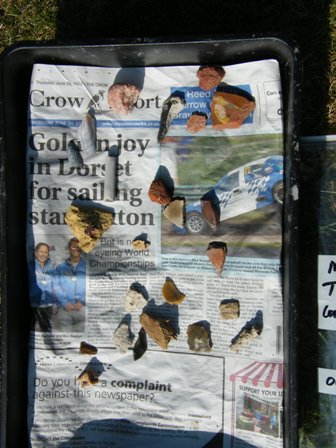



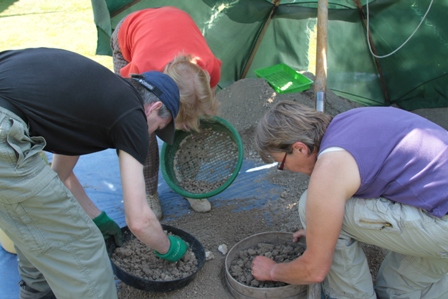
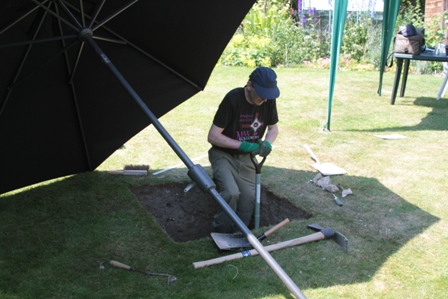



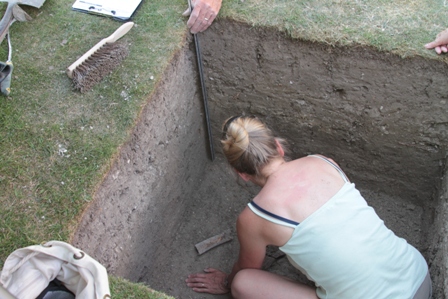


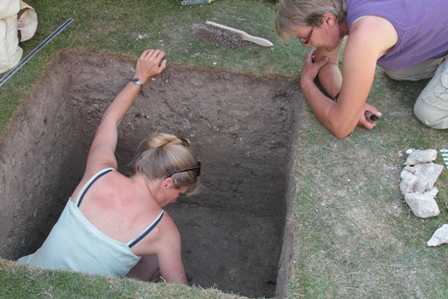


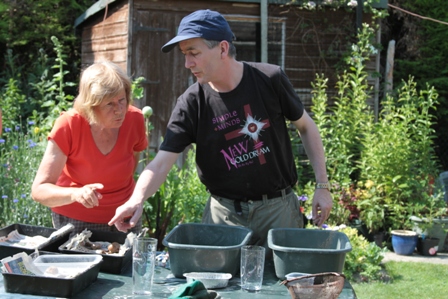


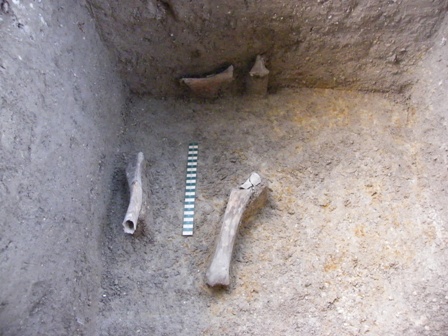









No Comments
Add a comment about this page